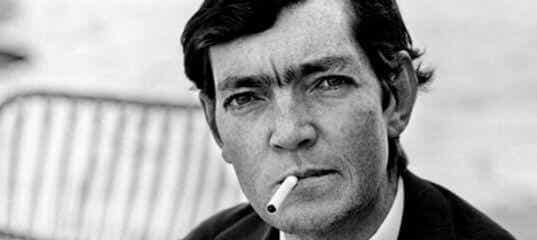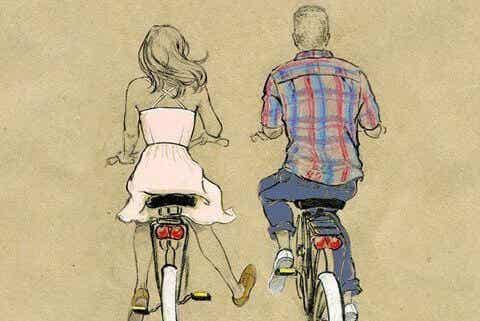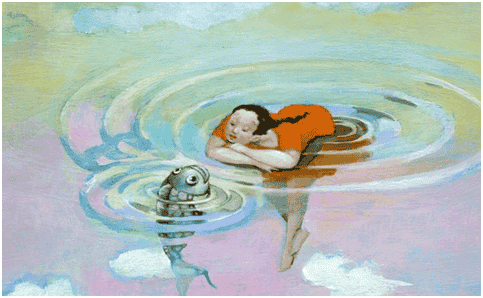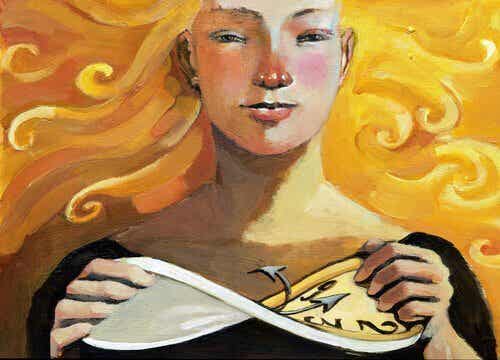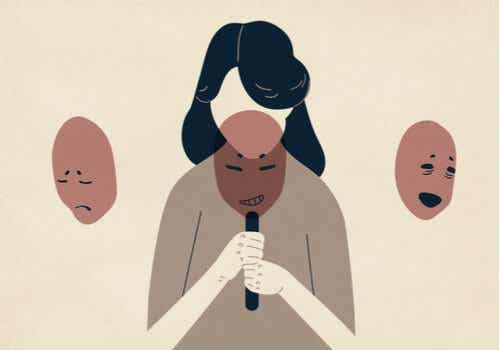
Last update: January 11, 2017
That problems always conceal an opportunity is a reality that has been confirmed several times. However, although we never fail to repeat this phrase to our friends to motivate them in times of difficulty, we often forget it when we need it most.
Problems are not just challenges for intelligence and reason. I wish it was like that! The difficulty lies in the fact that they often give rise to many instinctive and almost mechanical emotions: fear, anger, prejudices and apprehensions, intolerance ...
"You can't solve a problem with the same mentality that generated it"
–Albert Einstein–
As a result, we often end up getting lost in a glass of water. We lose the perspective of what we are capable of doing and remain still, paralyzed with fear, shy or simply abandoning ourselves to complaining. Perhaps we have programmed our minds to see threats in problems from which there is no way out; perhaps we have lost sight of the fact that problems are challenges and that by addressing them we can become better people. Today we will talk about the stories of men and women who have turned their problems into opportunities.
Elizabeth Murray, from the darkest problems to the light
Elizabeth Murray was born in the Bronx, USA, and the circumstances in which she grew up led her to live a complicated childhood. Her parents, two hippies from the 70s, soon succumbed to the world of drugs and, when she was born, they were two drug addicts with little hope of recovery - they routinely consumed cocaine and heroin.
Liz Murray with her father
Liz Murray and her sister spent their childhoods eating ice cubes and toothpaste, the only things they could find to fill their stomachs. For the most part, their parents fell ill with AIDS and their mother died. Her father moved to a homeless center and her sister went to live with a friend - Liz she literally stayed on the street at the age of 15.
The girl began to accept any chore, at 17 he returned to school and, during a visit from a Harvard exponent, decided that that would be his goal. And she joined him: she got a scholarship thanks to the New York Times. She is now a successful psychologist who understands human pain better than anyone else. She also published a successful book and her life was transported to the big screen.
Arturo Calle, the man who made austerity his strength
He is the most successful Colombian entrepreneur in the field of men's fashion. His father died when he was just a child, leaving a family of 8 young children and a widowed mother. To help his family, Arturo Calle started working from an early age - he knew the value of every penny and for this he adapted to a particularly austere philosophy of life.
As soon as he came of age, he got a job that allowed him to earn a minimum wage. Nonetheless, he continued to save for several years without stopping, until he saved up enough money to open a small clothing store. His motto was “save without ever getting into debt”.
So it was that, step by step, he became a successful entrepreneur and today the owner of numerous shops throughout Latin America. His garments have an extra value: the quality-price ratio is excellent since Arturo Calle's company does not owe a single penny to anyone. As a result, production costs are lower and prices lower. The man is also considered one of the 5 best employers in all of Colombia, since thanks to the help of the company, all his employees have their own home.
Wilma Rudolph, a story that will inspire you
Wilma Rudolph's was more than just a problem. Her difficulties have accompanied her since the first day of her life: she was born premature and the doctors doubted that she would survive. The little one, however, resisted, but at the age of 4 he contracted double pneumonia and fell ill with polio. As if that weren't enough, she came from a poor family, especially considering they had to feed as many as 22 children.
Due to the disease, Wilma lost the use of her left leg and was forced to walk with the help of an orthopedic device. Despite this, at 9 he decided to try walking without any help, and succeeded. At 11 he was able to join his school's basketball team, and for the first time he began to have faith in his physical abilities. At the age of 13 he decided to try athletics. During his first race he finished in last place, a result that was repeated in many other races in the following years.
Wilma Rudolph, 1960
After several years of training, he finally managed to win a race, and, once on the road to triumph, he decided never to stop. He managed to qualify for the Melbourne Olympic Games in 1956 by getting the bronze medal for the United States. In 1960 he won two gold medals in the Olympic Games in Rome. After contracting polio and suffering a serious injury, this woman reached the top of world athletics by winning three Olympic medals.








